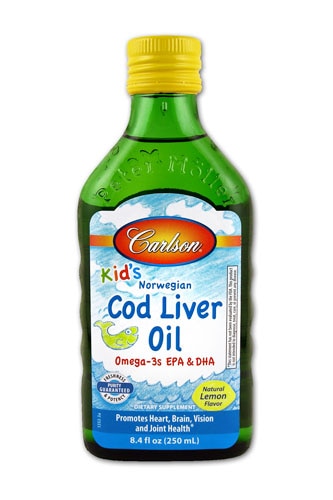The end of summer is often marked with a touch of poignancy—the sun starts setting earlier, fall is felt in the air and children around the country gear up to go back to school.
As a parent, you gear up too, primarily in the form of carving out a schedule that best suits your family—and encourages a healthy learning environment for your kids.
Part of cultivating that wholesome atmosphere—one that supports education and extracurricular activities—is found in focusing on nutrition. From serving breakfasts that promote all-day energy to packing lunches that brim with vitamins and minerals, you know that a well-nourished child is the key to success in and out of school.
But did you also know that nutritional supplements can play a big part in how your child thinks, behaves, operates and feels? Because while you may strive to serve perfect, nutrient-rich meals, environmental factors, soil depletion and your child’s personal preferences or restrictions might be creating nutritional gaps in their diet.
With that in mind, here are three supplements for kids that you should consider including in your regimen—and how to weave them into your family’s back-to-school routine:
1. Vitamin D
Frequently referred to as the sunshine vitamin, vitamin D can be a huge boon for your child’s overall development.
Why?
Vitamin D’s list of potential pros is vast and varied: It naturally supports bone and dental health by helping the body absorb phosphorous and calcium; it organically bolsters immunity and blood sugar levels; and it helps to support nervous system health.†
Some parents, however, are under the impression that giving their children vitamin D-fortified milk and other products suffices. Kudos for the effort of course, but recent studies reveal that most children aren’t getting enough of this essential nutrient—so much so that in 2014, the American Academy of Pediatrics increased the amount of vitamin D suggested for children. (Presently, children under a year-old need 400 IU daily; older children and adolescents require 600-1,000 IU per day.) What’s more, certain medications and children with diseases like cystic fibrosis and celiac disease may need an extra boost in their daily vitamin D intake.†
In addition to filling your kids’ plates with vitamin D-rich food like salmon, eggs, tuna and vitamin D-fortified yogurt, cereals, juices and milk, consider adding in a vitamin D supplement for kids too. Since it’s a fat-soluble nutrient—meaning it needs fat in order to be absorbed effectively—“serve” the supplement with your child’s largest meal of the day. The more often they’re given their sunshine vite with breakfast, lunch or dinner, the more natural it’ll become a central part of your daily routine. (And if they’re young, consider hiding it under the cup or plate—kids, as you know, love a good game.)
2. Probiotics
If you’ve paid attention to changes in the health food industry—or, really, food in general—you’ve likely noticed the influx of foods boasting the inclusion of probiotics. (Probiotic gummy bears, anyone?)
There’s a solid reason behind it.
“Our gut harbors billions of bacteria,” says the the Cleveland Clinic, “and the good bacteria is believed to overwhelm the unhealthy ones and keep us healthy. Probiotics add another layer of good microorganisms to the already existing good ones. Although probiotics are not a digestive cure-all, they can be highly beneficial for kids and adults.”†
Probiotics also can be especially helpful for your child after a round of antibiotics (during which most of that good gut flora gets killed along with harmful bacteria). Further, according to Pediatrics, probiotics can “help prevent diarrhea in children” while they’re taking antibiotics.†
On medication or not, probiotics can be enhanced through diet (such as yogurt with live and active cultures like acidophilus, bifidus, and bulgaricus) and with supplements. Dr. William Sears of Parenting recommends lactobacillus GG for children in his pediatric practice; other pediatricians suggest L. reuteri.
Whatever strain you use, consider administering probiotics to your child in the smallest supplement form possible (which is far less daunting for a child than a large pill). No luck swallowing? Consider crushing up chewable probiotics and adding them to applesauce, oatmeal or juice, or go with a probiotic liquid, powder or kids' chewable probiotics. Make it a daily habit, timed with a meal, so that it becomes as normal for your child as brushing their teeth—or snuggling down in bed with a book.
3. Cod liver oil
Made from several species of cod fish—a protein-rich fish found in the Pacific and North Atlantic Oceans—cod liver oil is a nutritional powerhouse, packing in excellent amounts of vitamins A, D, and K, as well as heart-healthy omega-3s and other fatty acids such as EPA and DHA (which are central to brain development and eyesight).† Additionally, as the San Francisco Chronicle reports, cod delivers fantastic levels of citamin B-12, which is “vital to red blood cell formation, neurological health and DNA synthesis.”†
Convincing a kid to ingest cod liver oil, however, is another story entirely. After all, getting your child to take a teaspoon of cough syrup can be a challenge—let alone an oil that smells and tastes decidedly fishy. Some parents have found success in slipping the oil into smoothies and juices; others have disguised it in muffins and breads. And yet others still have given their children chewable cod liver oil. Always tasty, these little gems can act as dessert.
Just get your pediatrician’s approval beforehand—for this and the other supplements listed here (or ones you may be considering). Doing so will allow you and your child to get into the back-to-school groove safely—and in wholesome style.
†These statements have not been approved by the Food and Drug Administration. These products are not intended to diagnose, treat, cure or prevent disease.




